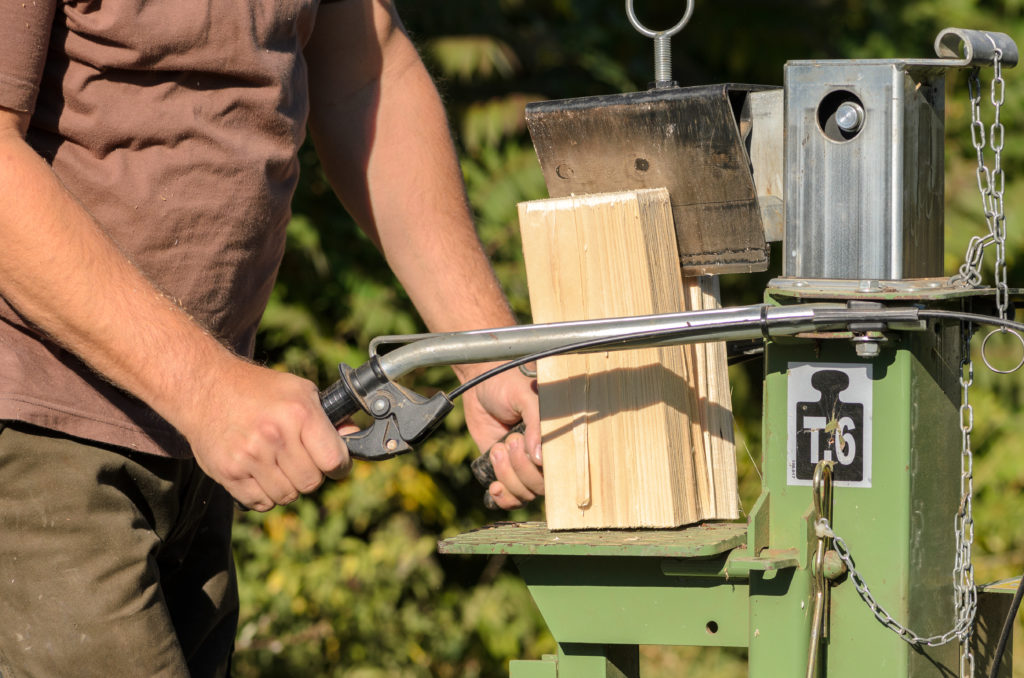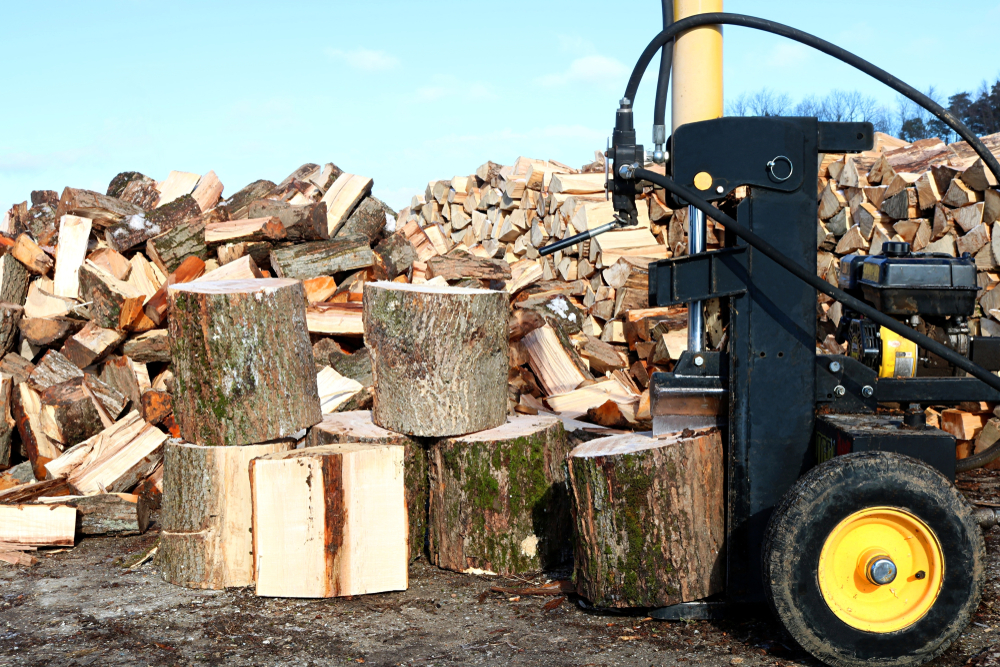Log splitters are a common site in many backyards. They are often used to split logs for firewood. While they are helpful tools, they can also be dangerous. In this blog post, we will discuss the dangers of log splitters and how to stay safe while using them.
So if your question is “are log splitters dangerous” then dive in as we answer but first let’s examine how a log splitter works
How does a log splitter work?
Log splitters use a hydraulic cylinder to push a log against a splitting wedge. This forces the log to split in two. The hydraulic cylinder is powered by a pump, which is usually driven by an electric motor.
So are log splitters dangerous?
Log splitters can be dangerous. The blades are sharp and the logs can fly apart with great force. These factors make log splitters a potential hazard if used incorrectly or carelessly. To avoid injury from these types of accidents, always follow safety precautions when using any type of log splitter!
Types of log splitters
There are two types of log splitters: electric and gas.
Electric log splitter which uses a motor to power the hydraulic cylinder. Gas powered log splitter which uses an engine to power the hydraulic cylinder.
Which type of log splitter is safer?
Both types of log splitters can be safe if used correctly. However, electric log splitters have one big advantage over gas log splitters: they do not use fuel (gasoline or diesel). This means that you can use an electric log splitter indoors without worrying about fumes.
Tips for operating a log splitter safely
The following are tips to operate a log splitter safely:
Wear protective gear
Eye protection, ear plugs, long pants and closed-toe shoes are a must when using any type of log splitter.
Use caution around the blades
The cutting blade on most log splitters is very sharp. If not properly handled it can cause injury to you or others in your work area! Use extra caution when working with these.
Always check the logs first
Before loading a log onto the splitting wedge, always check to make sure that it is free of nails, screws and other metal objects. These can cause serious injury if they come into contact with the blade.
Check the hydraulic fluid level
Make sure that the hydraulic fluid level is at the correct level before using your log splitter. Low fluid levels can cause the log splitter to malfunction.
Never use a log splitter to split concrete or bricks
These materials are too hard and will damage the wedge on your log splitter.
Adjust the machine to the right height
Make sure that the log splitter is adjusted to the correct height. This will help to prevent back injuries.
Always read the product manual
The manufacturer’s instructions provide important safety information that should be followed when splitting wood
Never operate gas-powered splitters indoors
These machines produce exhaust fumes which are toxic and can cause carbon monoxide poisoning.
Clear an area around the splitter
Make sure that there is plenty of room to operate the log splitter safely. Leave enough space for the logs to fall after they are split.
Keep children away
Children should not be allowed near the area where you are using a log splitter because they could get hurt or injured by flying pieces of wood if something goes wrong!
Always stop before adjusting
When adjusting this heavy machinery, always stop the engine and release the pressure on the hydraulic cylinder. This will prevent injuries caused by moving components.
Never operate under influence
This one is pretty self explanatory! Operating heavy machinerywhile intoxicated could result in serious injury to you or others.
Only one person should operate the machinery
Two people may confuse each otherChildren should not be allowed near any type of log splitter while it is in use because they could get hurt or injured by flying pieces of wood if something goes wrong! and cause injury to themselves or others.
Operate appropriate lighting
It is important that you can see what you are doing when operating any type of log splitter. Make sure there is enough light around the area where you will be working to ensure safety for all involved!
Never steady logs with your foot
This is a very dangerous practice and can easily lead to injury.
FAQs
Should a log splitter be sharp?
No, the log splitter should not be sharp. If it is, it can easily cause injury to you or others. The blade on a log splitter is very sharp and can cause serious injuries if not handled properly. Always use caution when working with the blade.
How much force does it take to split a log?
The force required to split woods depends on its size and density. The larger the diameter of a log, the more force will be needed to break it apart. Also, if there is bark present this can make splitting logs even harder because bark acts like glue between wood fibers! Smaller pieces are usually easier than large ones due to
Can you split logs sideways?
Yes, you can split wood sideways. Many people prefer this method because it is easier to control and safer for beginners than other methods like splitting them vertically down their length or horizontally along the grain direction of a piece of lumber (like plywood). To do this, simply place one end into your log splitter with its blade facing outwards and push the other end of the log towards the blade. This will cause the log to split in two along its diameter. You can also use a wedge-type tool for this task, but make sure that it is not too big or you may not be able to fit it into your splitter!
Conclusion
Splitting logs is not a difficult task, but it can be dangerous if you don’t take proper precautions. Always make sure to wear protective gear and keep children away from the area where wood splitting equipment are being used. Also remember that some woods are easier than others when it comes time for cutting them up into smaller pieces! If you follow all these tips, then it should be easy peasy lemon squeezy!




